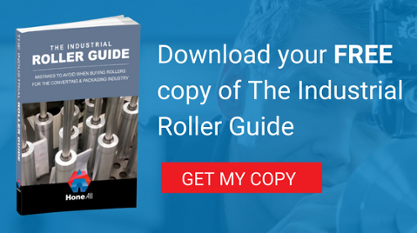CNC honing is a critical final step in the production of high-precision components, particularly those with tight tolerances and specific surface finish requirements. But achieving consistently accurate results depends on more than just running a standard cycle.
Before exploring the factors that influence honing accuracy, it’s important to understand the core stages of the CNC honing process and how they interact to produce a precision-finished bore:
CNC Honing Process Steps
-
Preparation: Confirm OD, ID, and length to ensure the component fits the machine safely. Mount a correctly sized honing tool, insert the relevant stones and then clamp the part in a rigid, repeatable fixture.
-
Programming: Enter material, initial/final bore size, and surface-finish requirements into the CNC programme. Set the spindle speed, stroke length and feed rate in the program.
-
Honing: Start the cycle. The honing tool rotates and reciprocates, and the abrasive stones expand against the bore wall. Material is gradually removed to achieve the required size and finish specifications.
-
Inspection: Both in-cycle and upon completion, monitor and measure the part’s diameter, roundness, and finish on the machine. Some CNC machinery has in-process gauging, others require a more manual approach. If the desired condition has not been achieved, adjust size, stone expansion or feed rate.
-
Production: Once the programme is proven, the cycle is dialled in and the CNC repeats the process for every part, yielding uniform, high quality, high precision components.

So, what factors influence the quality of the CNC honing process?
1. Machine Accuracy And Rigidity
CNC honing demands highly rigid machinery, as even minor spindle or fixture deflection can result in out-of-round bores or unwanted taper. Studies consistently show that machine and fixturing stiffness are key contributors to achieving accurate cylindricity. At Hone-All, our high-precision CNC honing machines can maintain bore tolerances within ±0.005 mm. Experience, expertise, regular calibration and preventative maintenance ensure this level of accuracy is both consistent and repeatable.
2. Tool Selection
The honing tool and abrasive must be carefully matched to the material and bore geometry. Aluminium oxide stones are typically used for steels, while silicon carbide or diamond abrasives are preferred for cast irons and harder superalloys. Stone length and taper must correspond precisely to the bore dimensions, as any mismatch can compromise accuracy. Using custom-balanced tooling further enhances precision, while high-quality mandrels help to minimise vibration.
3. Material Type
The properties of the components material have a direct impact on the honing process. Harder alloys require premium abrasives and lighter cutting pressures to avoid excessive tool wear or thermal distortion, while softer metals can tolerate more aggressive feeds. Thermal conductivity also varies by material, influencing the choice of honing oil. Each alloy demands specific speeds, feeds, and lubrication to achieve the desired surface finish and dimensional accuracy.
4. Honing Parameters
Spindle speed, stroke length, feed rate, and abrasive pressure must all be precisely calibrated to optimise the honing process. Among these, stroke and pressure have the greatest influence on bore roundness, which is why operators typically favour moderate speeds and lighter cuts to maintain control and minimise distortion. Once the ideal parameters are established, CNC automation ensures they are applied consistently across every part.
5. Workholding And Fixturing
A rigid, precisely aligned fixture is essential, as even slight part movement during honing can compromise bore geometry. Balanced clamping methods, such as spring collets, help to prevent distortion, both during machining and upon release. At @Hone-All Precision Ltd., fixture alignment is carefully verified for every setup to ensure the bore remains perfectly concentric under load and throughout the entire honing cycle.
6. Lubrication
Effective lubrication is critical to the CNC honing process. High-performance honing oils not only dissipate heat but also flush abrasive particles from the cutting zone, preventing glazing and surface damage. Proper lubrication reduces friction, stabilises cutting forces, and significantly extends the life of the abrasive stones, for more consistent and accurate results.
Find Out More
For more information on our CNC honing services, and the huge diameter ranges we cover with our multitude of machines, please get in touch.
Photographer: MONTY_RAKUSEN | Copyright: © MONTY_RAKUSEN







